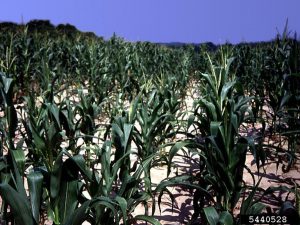Nematodes are thread-like microscopic worms that live in all habitats especially soil and water. Most species are beneficial but some are harmful parasites of plants and animals. Plant-parasitic nematodes are characterized by having a needle like structure in the mouth called a stylet that depending on the nematode species is used to feed on plant parts that may include roots, stems, leaves and seeds. Thresholds have been established for all nematode species with regards to the crops we grow in the southeast.
Plant-parasitic nematodes can cause a significant economic damage to almost all vegetable and field crops, fruit trees, ornamentals and turfgrass by reducing both yield and quality. Annual global yield loss caused by nematodes is $78- 80 billion with an estimated annual losses in the US of $8 billion. Damage caused by nematodes may provide an infection site for other disease causing pathogens that may cause additional loss in crop quality and yield. Control of plant-parasitic nematodes is usually accomplished through the application of fumigants that can range from $75 – $200 per acre.

As I stated before damage from these pests can initially appear as nutrient deficiency in the foliage and therefore is often incorrectly diagnosed. As root damage is a common due to feeding by plant-parasitic nematodes, nutrients and water essential for proper plant growth may not be absorbed.

Detection and correct identification of nematode species is the first step in managing plant-parasitic nematodes to check their spread and prevent economic damage. As most plant-parasitic nematodes live in the soil associated with plant roots, timely sampling of soil and plant samples is an important step in implementing appropriate strategies for control and preventing economic damage. The specific strategy for managing plant-parasitic nematodes varies with the crop.
Now is a great time to sample for nematodes in all of our agronomic crops like soybeans, cotton, peanuts and corn. If you have peaches or want to plant trees now is the time to get your sample for root knot nematode and again in February for ring nematode. Just like a soil sample, a nematode sample needs to be representative of the entire field. It is critical to keep the samples cool until you can get them to our office.